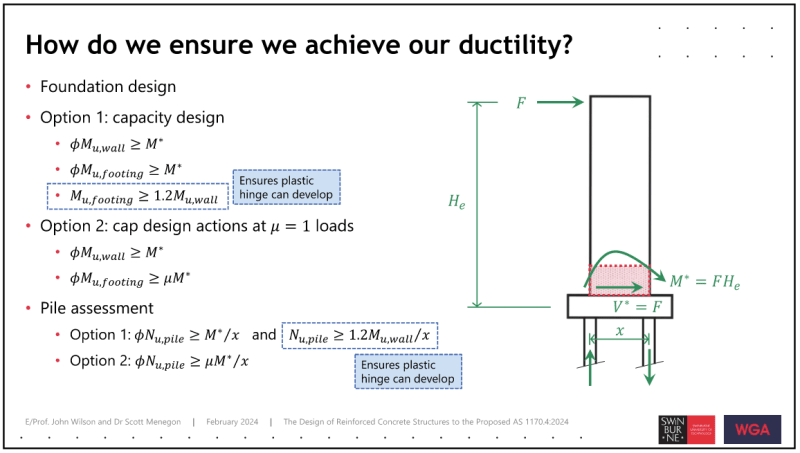-
2
- #1
li0ngalahad
Structural
Since the previous thread is now closed, I am opening a new one. There was a AS1170.4 seminar organised by CIA last week, held by Dr. John Wilson and Dr Scott Menegon. Very informative seminar in my opinion.
Towards the end of Menegon's presentation there was specific mention on the design of Foundation when the superstructure has a ductility mu>1.
Here's the screenshot of the presentation (hoping not to incur in copyright infringement) :

I think this clears out any confusion on what to do with foundations etc (refer to the discussion we had in the previous thread)
Scott also mentioned that requirements for foundations will be likely included in the new AS1170.4 and/or next amendment of AS3600, which is great news.
Towards the end of Menegon's presentation there was specific mention on the design of Foundation when the superstructure has a ductility mu>1.
Here's the screenshot of the presentation (hoping not to incur in copyright infringement) :

I think this clears out any confusion on what to do with foundations etc (refer to the discussion we had in the previous thread)
Scott also mentioned that requirements for foundations will be likely included in the new AS1170.4 and/or next amendment of AS3600, which is great news.

![[bigsmile] [bigsmile] [bigsmile]](/data/assets/smilies/bigsmile.gif) .
.